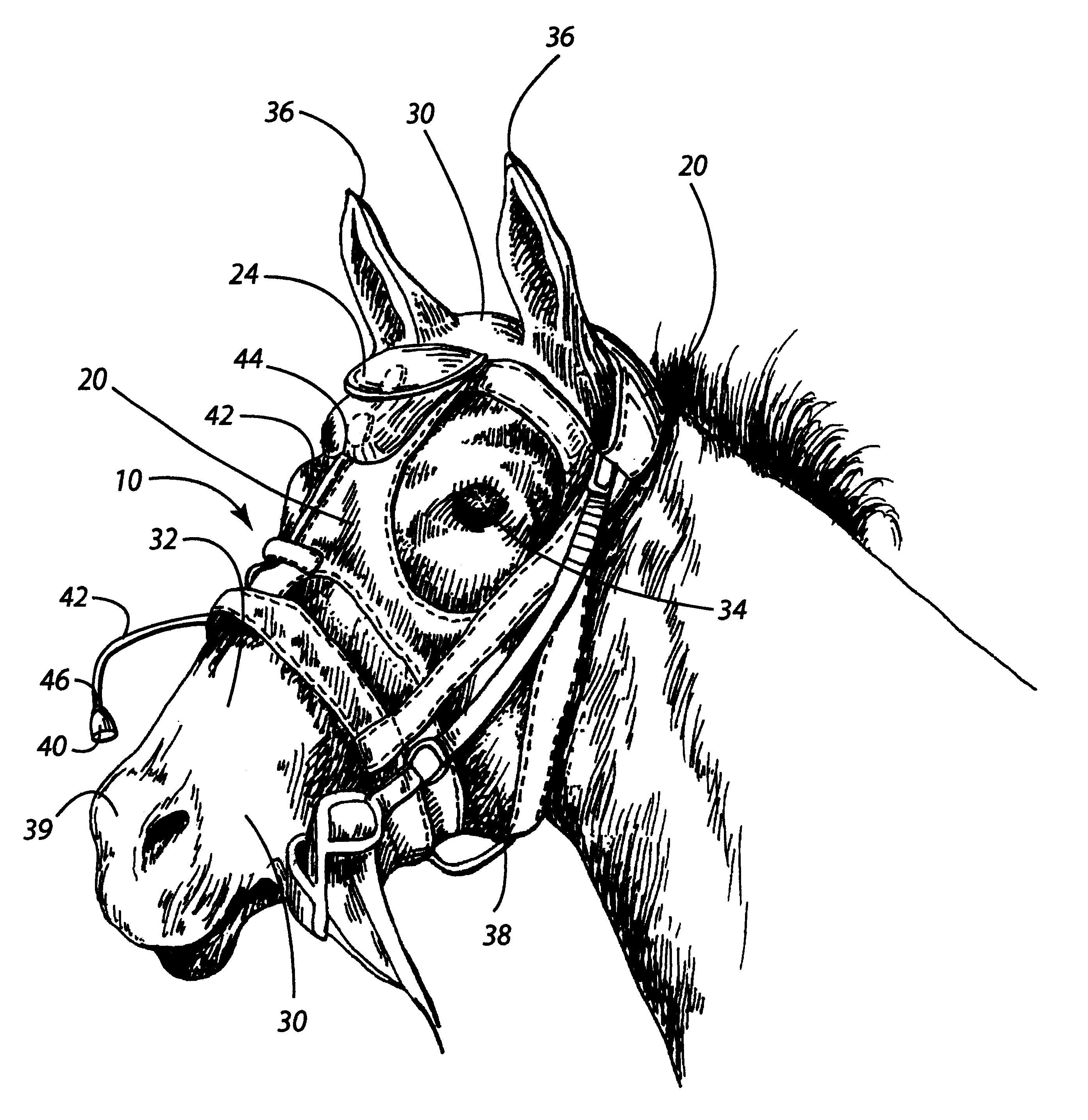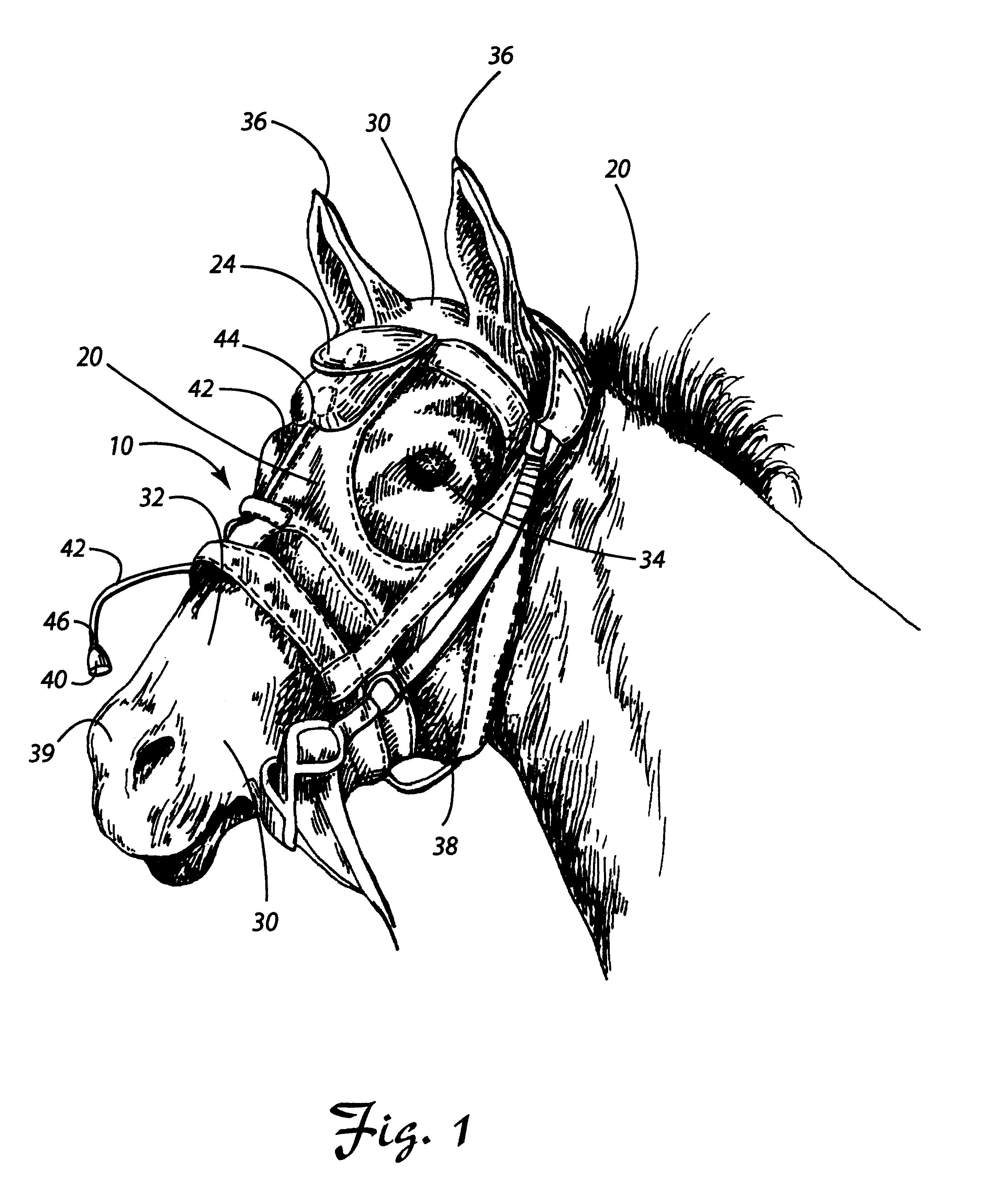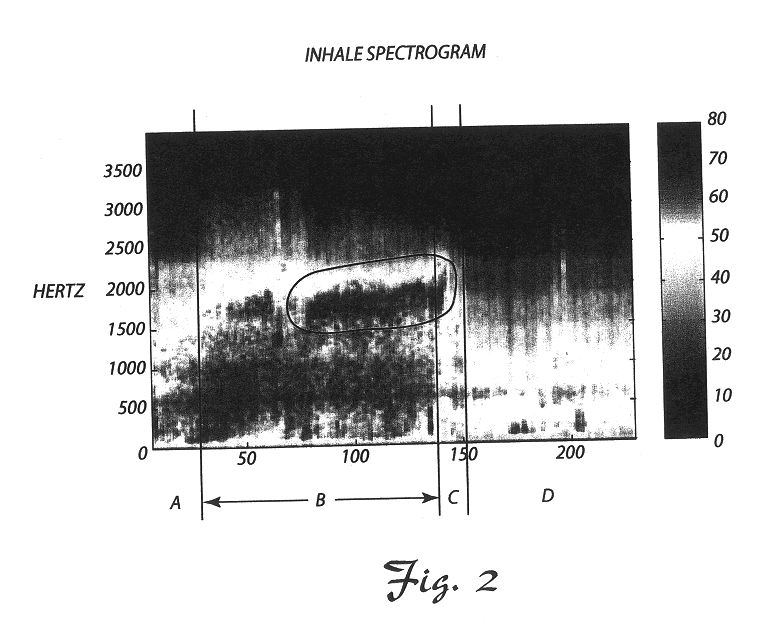Method and device for analyzing athletic potential in horses
a technology for athletic potential and analysis methods, applied in the field of athletic potential analysis methods and devices, can solve the problems of limited analytical systems, inability to use galloping horses under field conditions, and inability to develop a very consistent, reliable and reproducible system for athletic potential analysis
- Summary
- Abstract
- Description
- Claims
- Application Information
AI Technical Summary
Benefits of technology
Problems solved by technology
Method used
Image
Examples
Embodiment Construction
FIGS. 2-5 are directed to the analysis of two thoroughbred race horses, Horse F-1 and Horse B-2, using the device and methods provided by the invention. In general, the device of the invention as shown in FIG. 1 and described above was attached to each horse and a recording was made of the subject horse's breathing sounds during a breeze (fast workout) over a dirt training track. The breeze or workout was also videotaped and times recorded for each furlong of the workout.
Horse F-1 is a Grade I stakes winning filly and Horse B-2, a colt, is a winner at the $5,000.00 claiming level, thus there is a vast difference in athletic ability of these two animals. The spectrogram analysis of the recorded breathing patterns of these two horses demonstrates the utility of the methods for predicting racing performance as set forth herein. As set forth in greater detail below, both horses demonstrate a pathogenic whistling sound during a workout (breeze) and endoscopic examination of the upper air...
PUM
 Login to View More
Login to View More Abstract
Description
Claims
Application Information
 Login to View More
Login to View More - R&D
- Intellectual Property
- Life Sciences
- Materials
- Tech Scout
- Unparalleled Data Quality
- Higher Quality Content
- 60% Fewer Hallucinations
Browse by: Latest US Patents, China's latest patents, Technical Efficacy Thesaurus, Application Domain, Technology Topic, Popular Technical Reports.
© 2025 PatSnap. All rights reserved.Legal|Privacy policy|Modern Slavery Act Transparency Statement|Sitemap|About US| Contact US: help@patsnap.com



